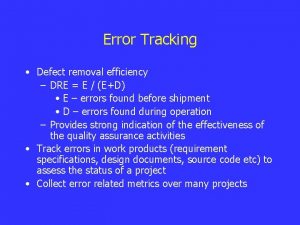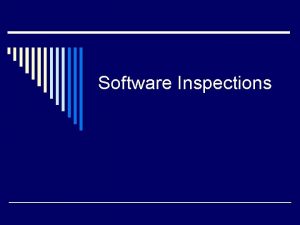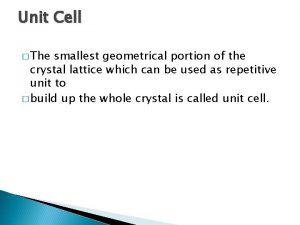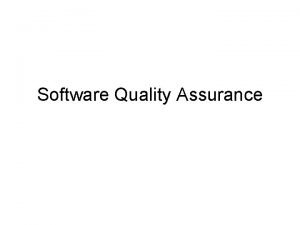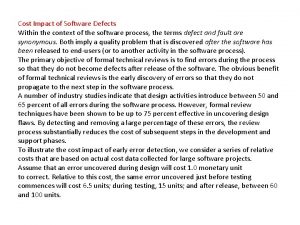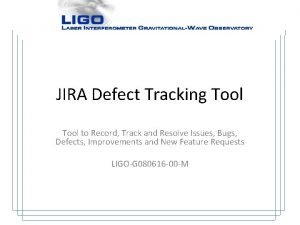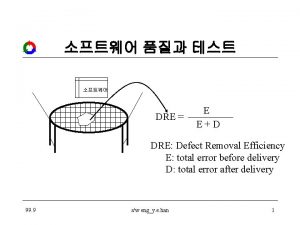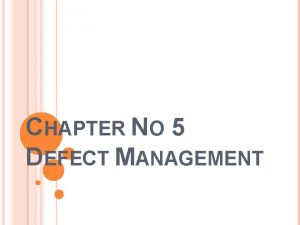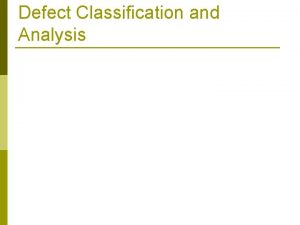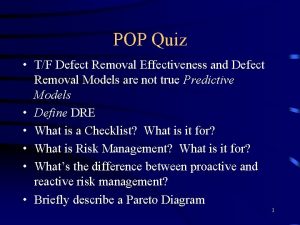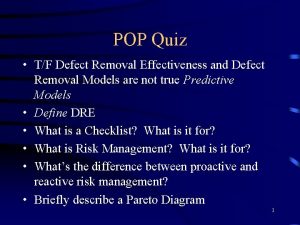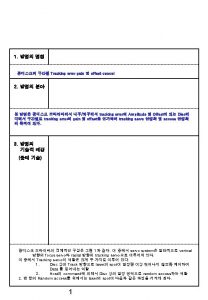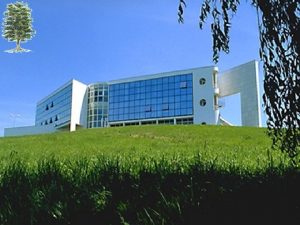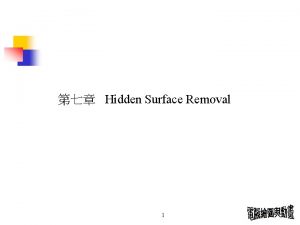Error Tracking Defect removal efficiency DRE E ED










- Slides: 10

Error Tracking • Defect removal efficiency – DRE = E / (E+D) • E – errors found before shipment • D – errors found during operation – Provides strong indication of the effectiveness of the quality assurance activities • Track errors in work products (requirement specifications, design documents, source code etc) to assess the status of a project • Collect error related metrics over many projects

Recap

Software Engineering II Lecture 26 Fakhar Lodhi

Using Error Tracking to assess progress • Let us assume that we have collected errors and defect data over the last 24 months – Errors per requirement specification page – Ereq – Error per component – design level – Edesign – Errors per component – code level – Ecode – DRE – requirement analysis – DRE – architectural design – DRE – coding

Using Error Tracking to assess progress • Record the number of errors found during each SE step • Calculate current values for Ereq, Edesign, and Ecode • Compare to averages of past projects • If the current results vary more than 20% from average, there may be cause for concern and there is certainly cause for investigation

Example • Ereq for the current project = 2. 1 • Organizational average = 3. 6

• Can also be used to better target review and/or testing resources – 120 components – 32 exhibit Edesign > 1. 2 average – Adjust code review resources accordingly

Software Quality • Software quality is defined as: – Conformance to explicitly stated functional and non-functional requirements, explicitly documented development standards, and implicit characteristics that are expected of all professionally developed software.

Software Quality • 3 important points – Software requirements are the foundation from which quality is measured. Lack of conformance is lack of quality – Specified standards define a set of development criteria that guide the manner in which software is engineered. If the criteria are not followed, lack of quality will almost surely result. – A set of implicit requirements often goes unmentioned (ease of use, good maintainability etc. )

Quality Assurance • Goal is to provide the management with the necessary data to be informed about product quality • Consists of auditing and reporting functions of management • If data provided through QA identifies problems, the management deploys the necessary resources to fix it
 Defect removal efficiency
Defect removal efficiency Defect removal efficiency
Defect removal efficiency Schottky defect and frenkel defect
Schottky defect and frenkel defect Vacancy defect and interstitial defect
Vacancy defect and interstitial defect What is frenkel defect
What is frenkel defect Statistical sqa
Statistical sqa Cost impact of software defects
Cost impact of software defects Jira defect tracking
Jira defect tracking Productive inefficiency and allocative inefficiency
Productive inefficiency and allocative inefficiency Opportunity cost formula
Opportunity cost formula Allocative efficiency vs productive efficiency
Allocative efficiency vs productive efficiency
